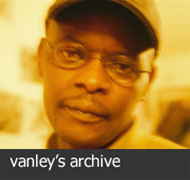 |
Home > Guidance > How to Create an Archive |
|

There is no set way to create an archive and there is no set material that qualifies as 'archivable'. Archives can be made up of photographs, minute books, posters.... basically, anything goes! The motivations for creating archives are as broad as the potential materials that are wthin them. This section of the website uses examples taken from different types of archives to explore how and why archives are created, collected and presented, and to suggest how you might go about creating your own archive. |
|

|
Constance Davis
Here we examine the archive of Constance Davis, a Jewish woman whose family origins are in both Russia and Poland. Born in 1917 she moved away from Birmingham during WWII, but came back following the end of the war living in Selly Oak and working as a Post Office supervisor, a job she did for over 30 years. This story offers a glimpse into Constance's personal life, including photographs of her parents wedding and family holidays, as well as her own personal diaries and other ephemera. This story is a privileged insight into the life of one woman and her family, but should also be recognised as an example of how we all create history and our own archives.
We have endeavoured to lay the following pages out in a style that gives the feel of searching an archive but also in such a way as provide information about a Jewish woman in Birmingham throughout the last century.
|
|

|
Vanley's Archive
In this section of 'How to create an Archive' we look at the potential motivations for collecting materials through the example of Vanley Burke. Further information regarding his archive is available in collections. This section is composed of an introduction and a transcript of an informal interview given to a member of the Connecting Histories team.
What is made clear is the need for representation in the archives and how important that is for the community Vanley represents.
|
|
 |
Conservation: caring for your archive
The National Archives and The Institute of Paper Conservation have produced a series of easy to understand leaflets which offer advice and guidance on the care of books, documents, and photographs. The leaflets are available on the National Archives website by following these links:
Caring for prints
Caring for books
Caring for photographs
|
|